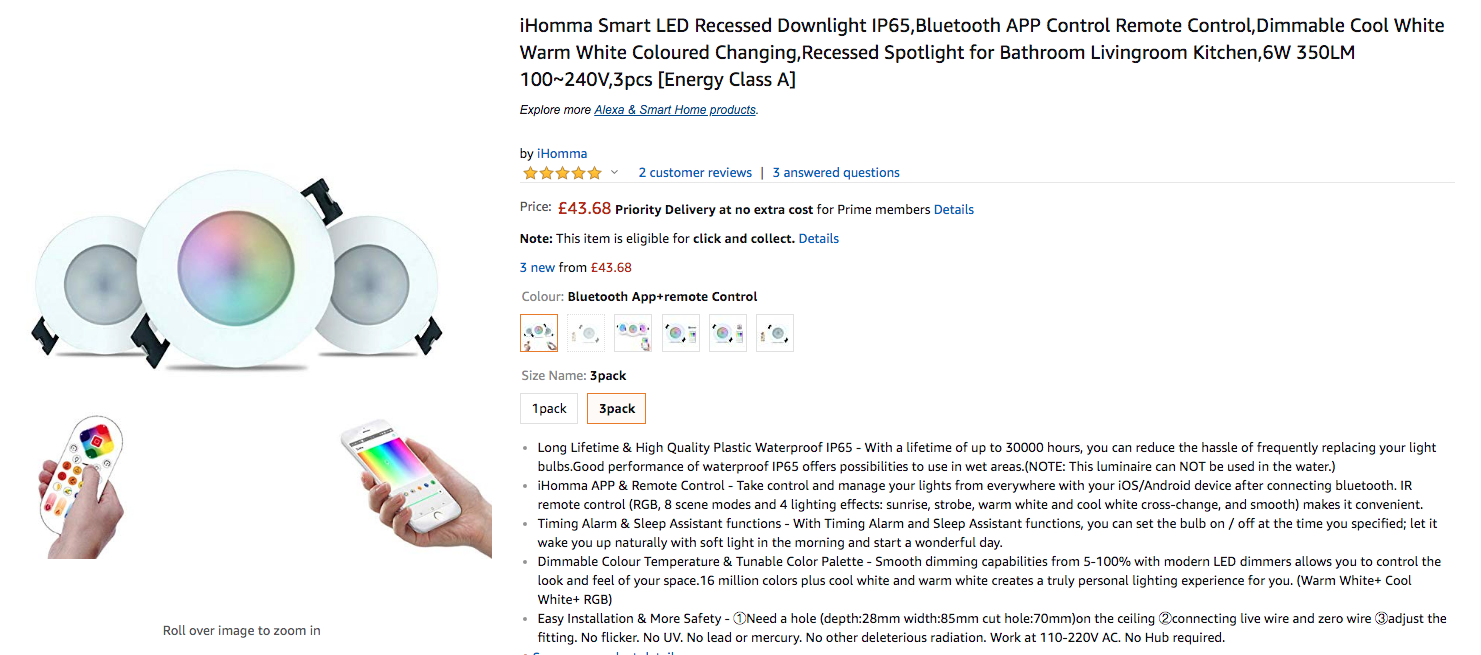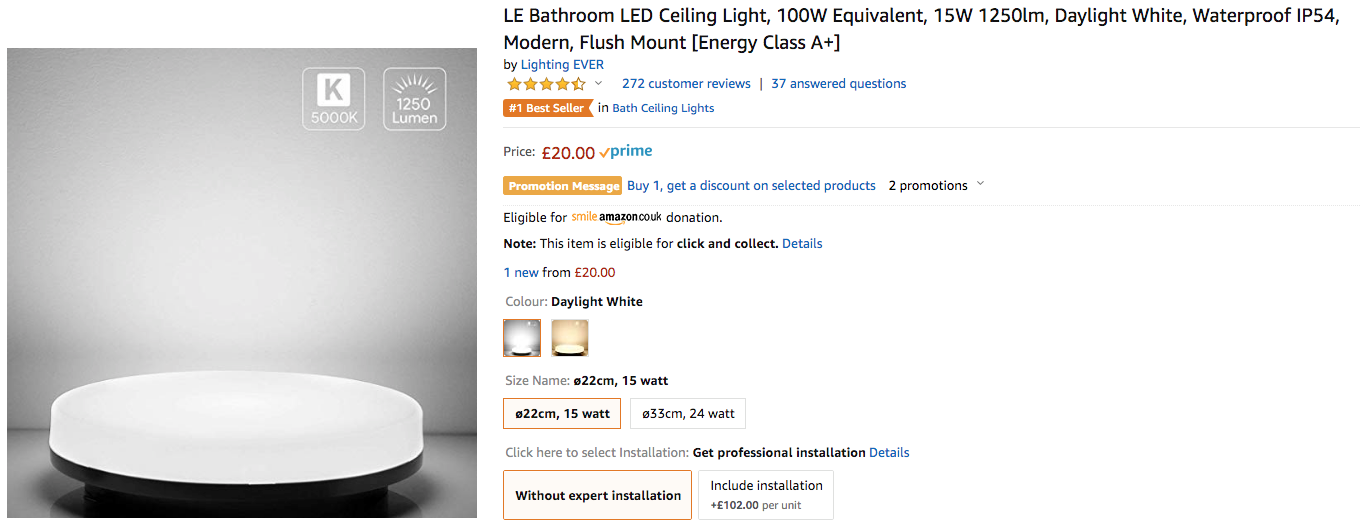There are two other considerations to discuss here:
- Dimmable: We have been careful to have dimmable lights across the whole house (and not very bright lights in the corridors where they are not dimmable), so it would seem silly to have only super bright lights in the last place people go before they go to sleep
- Finding lights that are dimmable and IP65 however seems a little akin to finding the Holy Grail - there are a small handful of IP44 dimmable lights (but this is only 'protected from light spray of water' as opposed to IP65's 'protected from low pressure water jets' which is much better for the enclosed shower areas http://www.dsmt.com/resources/ip-rating-chart/)
- Non-flush mounted: Ideally, because those ceilings are a pain to get into, we would be able to mount the lights ontop of the ceiling rather than in it - this would also give us more versatility to test different lights
The only IP65 light fitting that I've found matches both of these criteria is:
https://smile.amazon.co.uk/Bathroom-Waterproof-Changing-Bluetooth-Smartphone/dp/B07DXRNFGL/ref=cm_cr_arp_d_product_top

My biggest problem here is that apparently everything is proprietary, the app they have is awful and we're just adding another remote to the mix in the meantime.
Also, we need a TON of them. There are 16 light points in the upstairs bathroom alone.
The dimmable part is the stickler here. If they don't have to be dimmable, this becomes a walk in the park.
I'm upping this to
priority-1because if we can only find flush-mounted light points, we have to get them here this week for the electricians to work with














The aim here is to have light be plentiful and IP64 + to withstand being directly above the showers without any issues.
Final portion of #47.
We couldn't find any at Leroy Merlin so we should look further afield.